Bichon Frise Dog Overview: Key Facts, Temperament & Care Guide
The Bichon Frise is a small, lively dog known for its fluffy white coat and friendly nature. It is a breed that thrives on human companionship and adapts well to different living situations. This breed is especially popular for being affectionate, playful, and hypoallergenic, making it a great choice for many families and individuals.
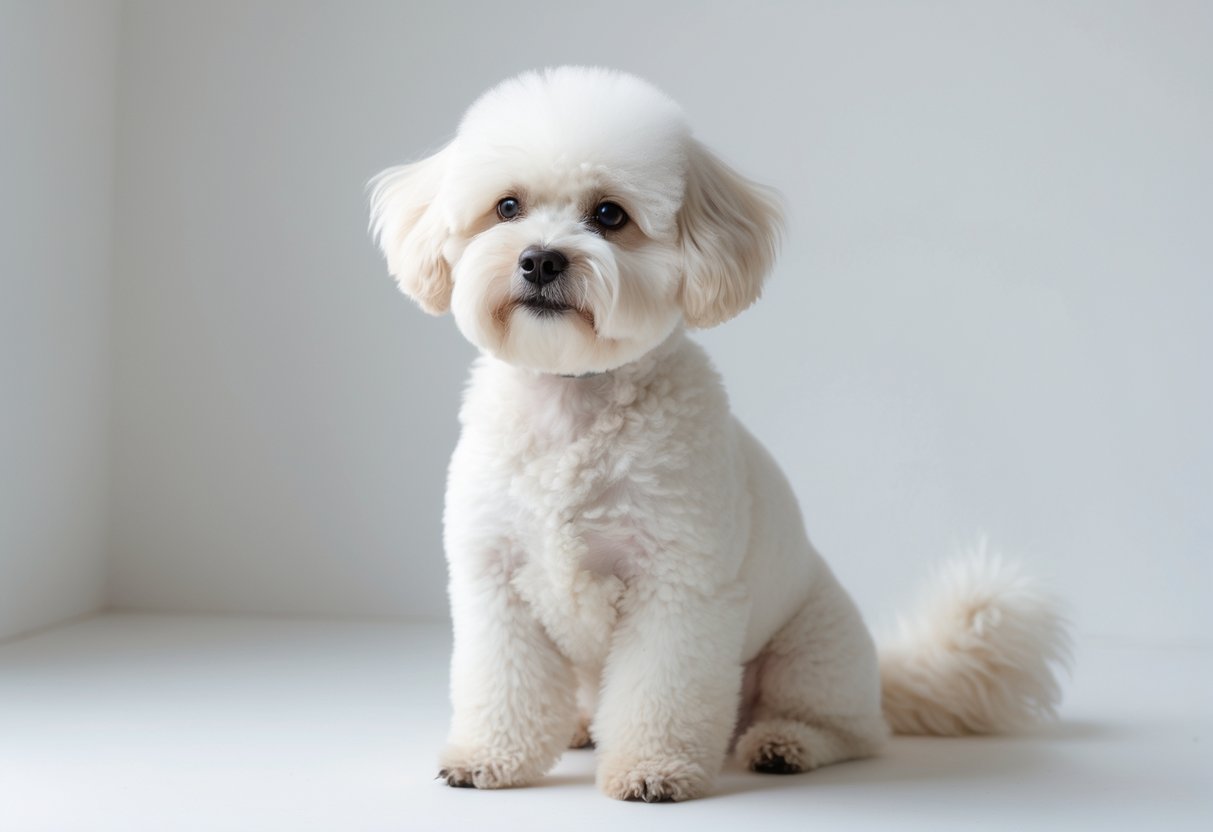
Originating from the Mediterranean region, the Bichon Frise was once favored by European nobility for its charming personality and distinctive curly coat. Its compact size and cheerful demeanor make it an appealing companion, while its intelligence means it learns quickly with proper training.
This dog needs regular grooming to maintain its soft, curly fur and benefits from consistent socialization and exercise. Its lifespan typically spans 14 to 15 years, and with proper care, the Bichon Frise remains a healthy, joyful pet that fits well with active and caring owners.
Key Takeaways
- The Bichon Frise is a small, affectionate, and playful dog with a hypoallergenic coat.
- It requires regular grooming and consistent training to stay happy and healthy.
- This breed suits families and individuals who can provide companionship and care.
Bichon Frise Dog Overview
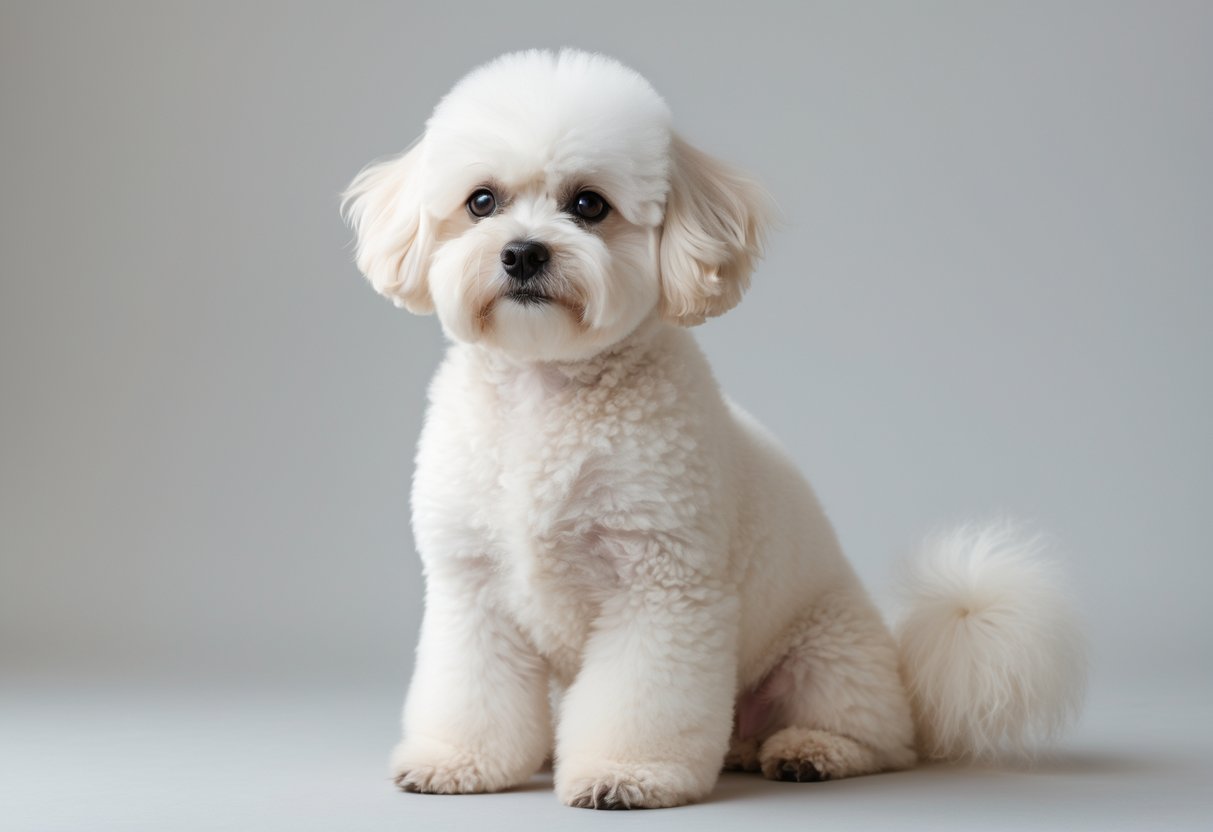
The Bichon Frise is a small, sturdy dog known for its white, curly coat and cheerful personality. It is a social breed that adapts well to family life and smaller living spaces. Its history, grooming needs, and official recognition all play a role in understanding this charming dog.
Breed Traits and Characteristics
The Bichon Frise typically weighs between 12 to 18 pounds and stands about 9.5 to 11.5 inches tall. It has a compact, resilient build that makes it suitable for urban living. This breed is playful, friendly, and intelligent. It enjoys social settings and usually gets along with children and other pets.
Bichons are lively but also affectionate, forming strong bonds with their owners. They can be curious and alert without being aggressive. Their personalities make them well-suited for families and individuals who want an interactive companion. Their lifespan is usually 12 to 15 years.
Hypoallergenic and Curly Coat
The Bichon Frise is known for its soft, white, curly coat, which often appears fluffy like cotton. This coat is also hypoallergenic, meaning it sheds very little and produces fewer allergens compared to many other breeds. This makes it a preferred choice for people with mild pet allergies.
Their coat requires regular grooming to prevent matting and maintain its characteristic curl. Owners should plan on brushing the dog several times a week and professional grooming every 4 to 6 weeks. This care helps keep the coat healthy and the dog comfortable.
Recognition by the American Kennel Club
The American Kennel Club (AKC) officially recognizes the Bichon Frisé as a member of the Non-Sporting Group. The breed standard emphasizes its small size, fluffy white coat, and lively personality. The AKC outlines specific traits related to the dog’s structure, coat texture, and behavior that define the breed.
The recognition by the AKC has helped maintain consistent breeding standards and popularize the Bichon Frise in the United States and worldwide. It also allows owners to participate in official dog shows and events focused on this breed’s qualities.
History and Origin
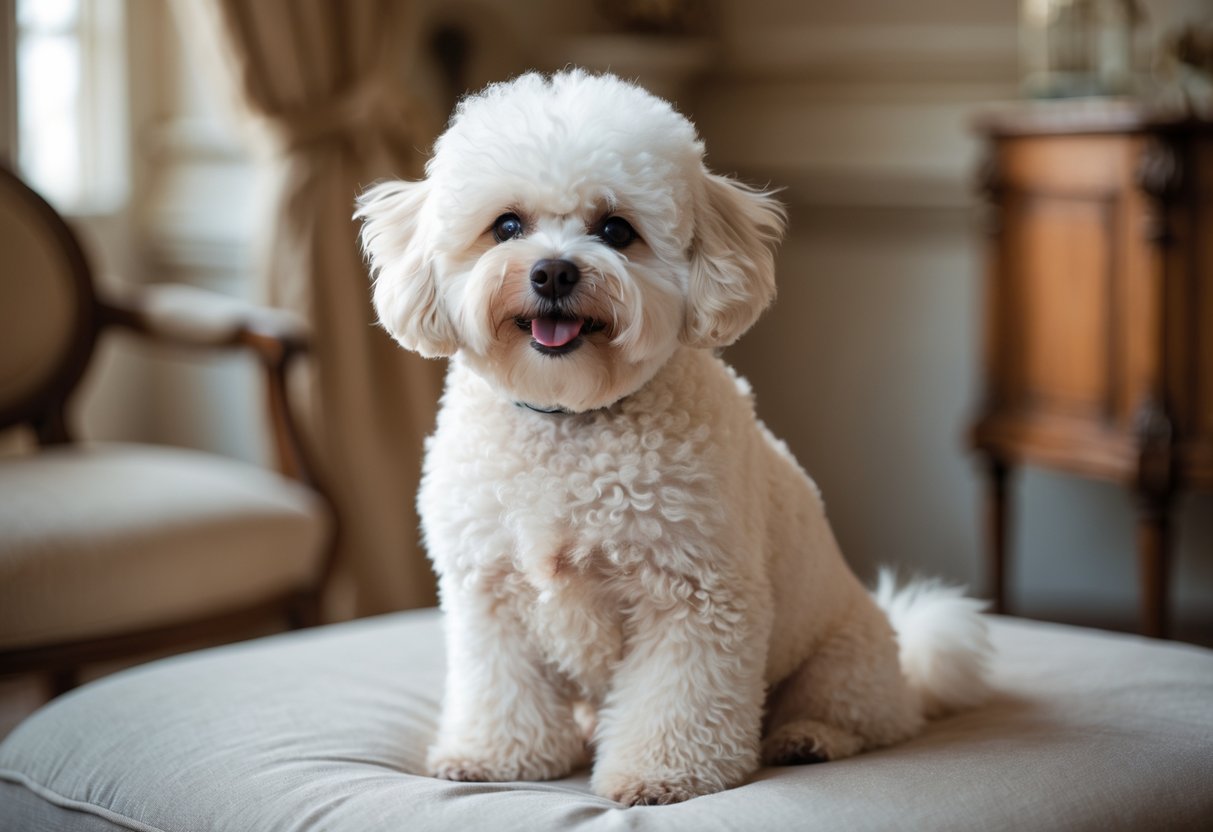
The Bichon Frise’s history traces back to Mediterranean and European regions. It developed from small, curly-coated dogs favored on ships and in royal courts. Its role changed from a sailor’s companion to a beloved pet admired by nobility.
Mediterranean and European Roots
The breed’s earliest ancestors likely came from the Mediterranean basin. One key ancestor is the Bichon Tenerife, a small, curly dog from the Canary Islands. Spanish sailors valued this type of dog and brought it to Europe in the Middle Ages.
European breeds like the Barbet, a water dog known for hunting ability, mixed with smaller lap dogs. This mixing created the foundation for modern Bichon Frise traits, including its fluffy coat and friendly nature.
By the 13th century, Bichon ancestors were well-known in Mediterranean countries such as Spain, Italy, and France. They spread across Europe through trade and travel, gaining popularity outside their place of origin.
Bichon Tenerife and Bichon à poil frisé
The Bichon Tenerife was an early form of the breed, recognized for its small size and curly fur. It played a major role in shaping today’s Bichon Frise. Italian sailors helped introduce the dog to mainland Europe in the 1300s.
The name Bichon à poil frisé refers to the breed’s signature curly, white coat. This term became popular in France, where the breed gained great fame. French noble courts favored these dogs, and their image appeared in art and paintings.
The “Frisé” name highlights the breed’s unique coat texture, different from other white lap dogs. Over time, breeders focused on enhancing this feature, setting the Bichon Frise apart.
Role as a Companion Dog through the Ages
The Bichon Frise has been valued as a companion dog for centuries. Royals and nobles cherished them for their playful and affectionate nature. In Spain, the dogs were favorites of the Infantas, and French kings often kept them close as lap warmers.
During the Renaissance, Bichons appeared in portraits of European aristocrats. Their charm helped them survive periods of decline, such as after the French Revolution when many dogs lived as street companions.
Later, they became performers with organ grinders and circus acts. By the late 1800s, the breed was common in towns and cities, admired for both companionship and entertainment.
Physical Appearance
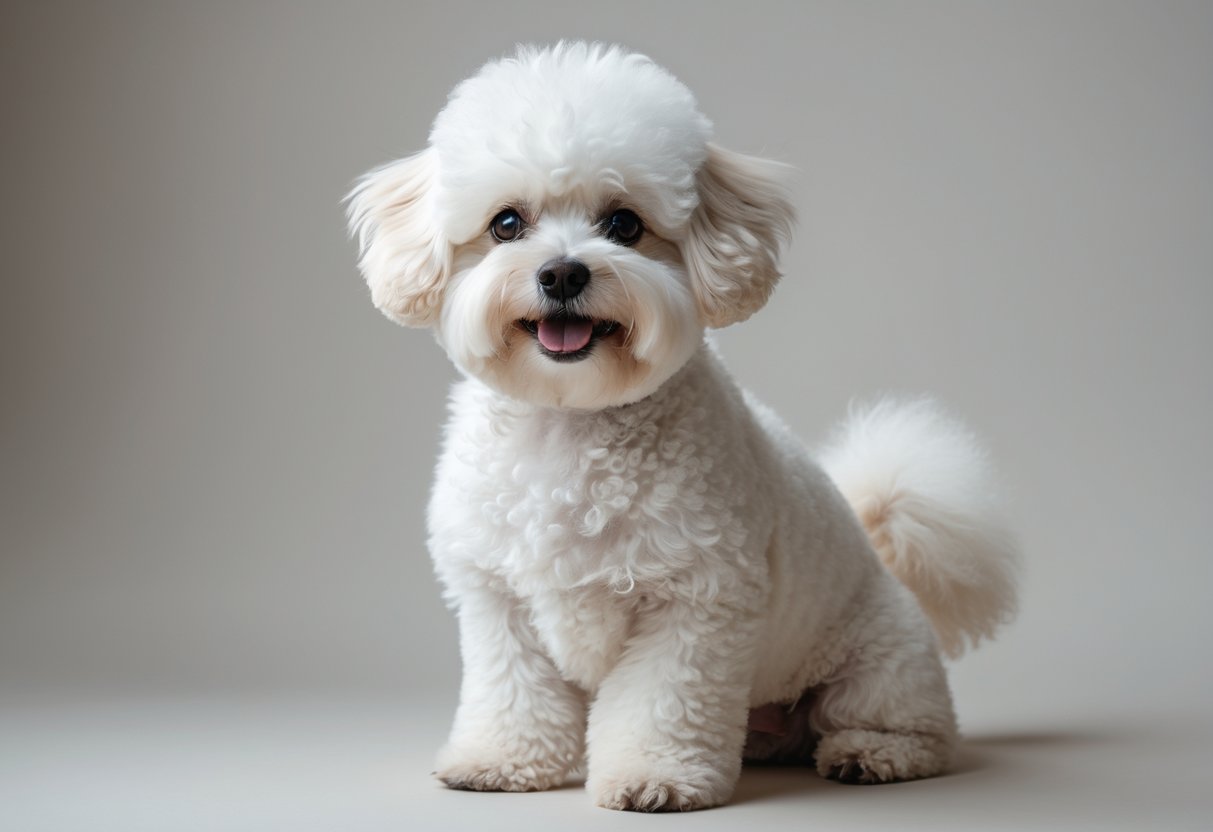
The Bichon Frise is a small, sturdy dog known for its soft, curly coat and balanced body. Its size, coat, and facial features combine to create a distinctive, elegant look that makes this breed easily recognizable.
Size and Build
The Bichon Frise usually stands between 9.5 and 11.5 inches tall at the shoulder. It weighs from 10 to 18 pounds, making it a compact lap dog. Despite its small size, the breed has a sturdy, well-proportioned frame with a straight posture.
Its body is slightly longer than tall, giving it a balanced shape. The chest is moderately broad, and the legs are strong and straight. This build supports an active lifestyle without appearing fragile.
Coat Colors and Texture
The Bichon Frise is best known for its pure white, curly coat. This coat is hypoallergenic, which means it sheds very little and is usually a good choice for allergy sufferers.
The coat has two parts: a soft undercoat and a thicker, curly outer coat. Regular grooming is needed to keep the fur looking fluffy and clean. Some dogs may have slight shading of cream or buff, but pure white is preferred.
Distinctive Facial Features
The Bichon Frise has a round, expressive face with dark, round eyes set wide apart. These eyes give the dog a lively, intelligent look. Its nose is black and contrasts sharply with the white coat.
The ears are drop-shaped, covered with long fur that blends into the head’s fluffy outline. The muzzle is short but well-defined, and the smile-like expression is a hallmark of the breed’s friendly nature.
Temperament and Personality
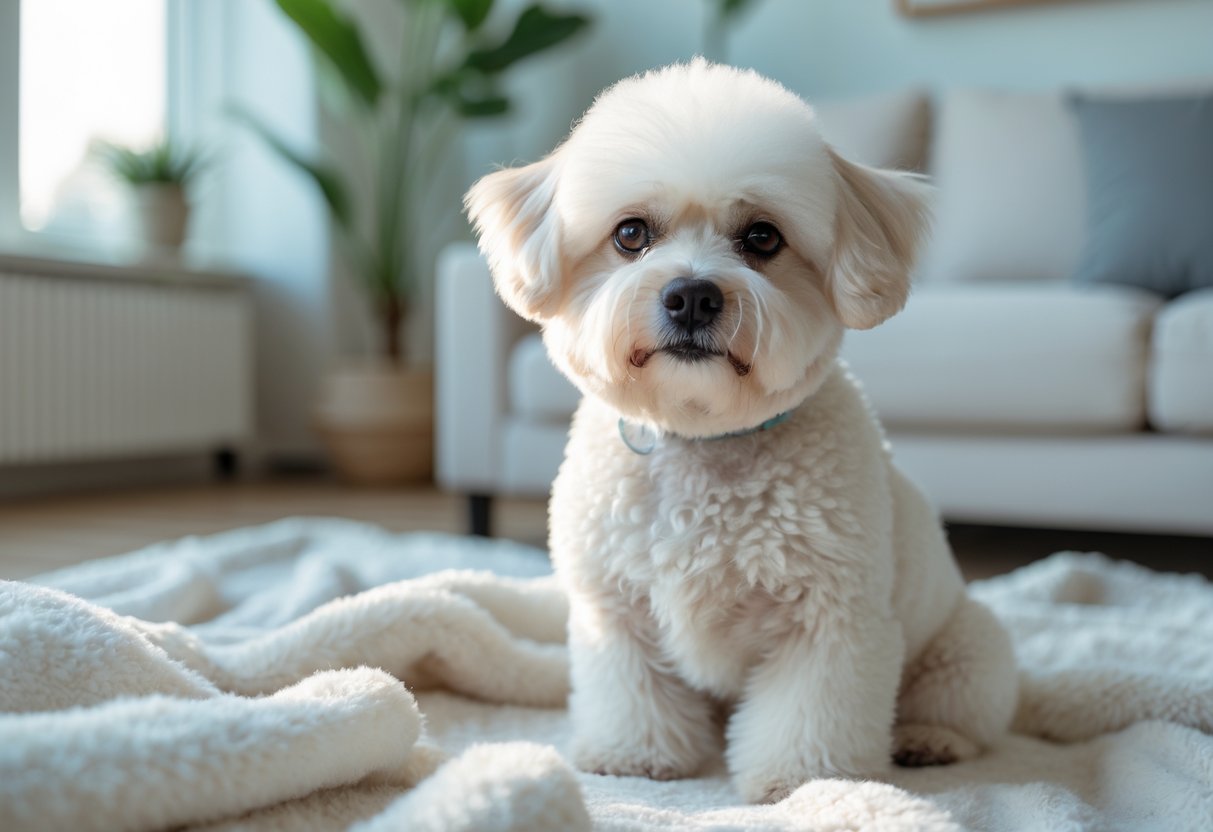
The Bichon Frise is a small, lively companion dog known for its bright, loving character. It displays a mix of playfulness, social skills, and gentle behavior with children and other pets. Its personality traits make it a popular choice for families and individuals alike.
Playful and Affectionate Nature
The Bichon Frise is naturally playful and enjoys daily activities like fetch and interactive games. This breed shows bursts of energy but also values quiet cuddle time with its owners. Its affectionate nature makes it eager to bond closely with family members.
They often seek attention and love being part of household routines. The dog responds well to positive reinforcement and enjoys learning new tricks due to its intelligence. This blend of playfulness and loyalty helps build a strong, lasting companionship.
Social Traits and Adaptability
Bichon Frises are highly social and thrive on interaction with people and other animals. They can adapt well to different living environments, from apartments to larger homes. Regular socialization helps reduce separation anxiety, common in this breed due to their need for companionship.
They are generally friendly with strangers but may show slight reserve if not introduced early. This breed prefers being near family members and dislikes long periods alone. Their adaptable temperament fits a variety of lifestyles as long as their social needs are met.
Behavior with Children and Other Pets
Bichon Frises are gentle and patient, traits that make them good companions for children. They play well with kids but still require supervision during interactions with young children to ensure safety for both.
The breed tends to get along with other pets, especially when socialized early. They usually accept other dogs and smaller animals peacefully. Their friendly and non-aggressive behavior contributes to peaceful coexistence in multi-pet homes.
Training and Socialization
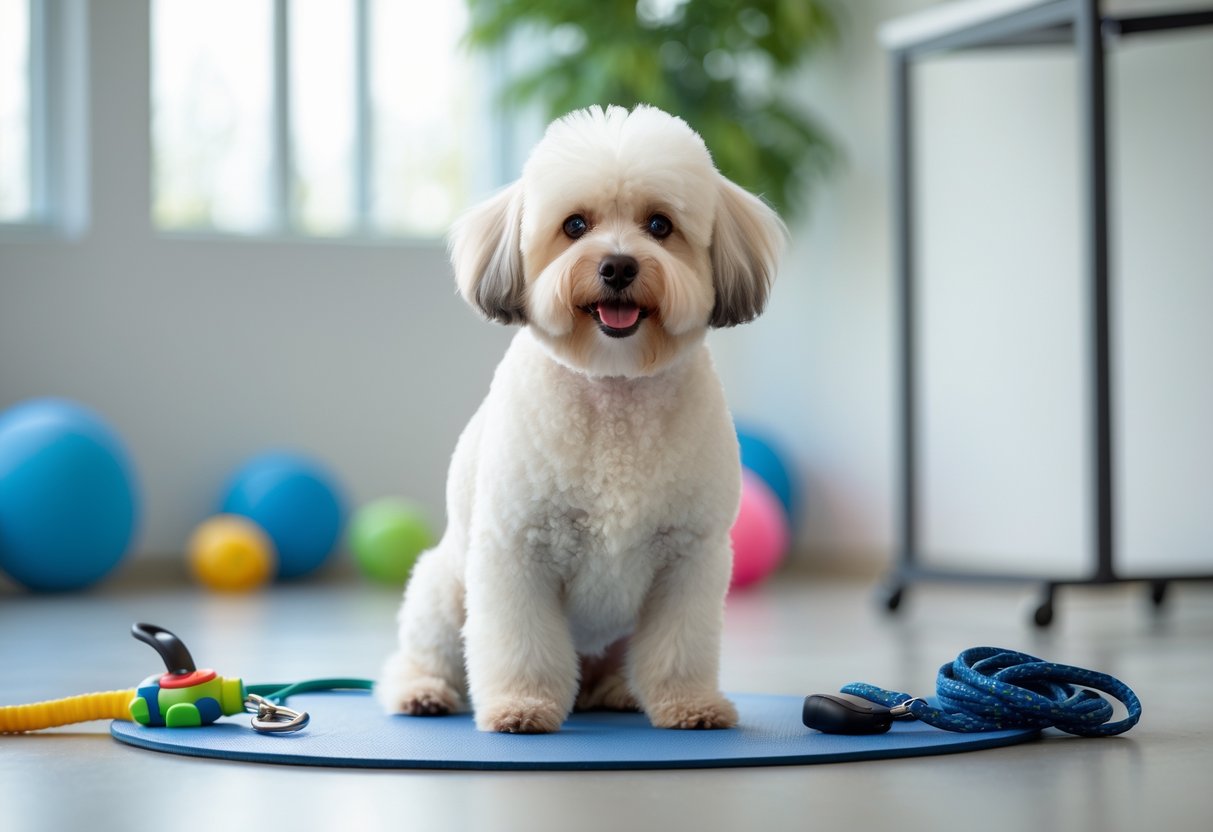
Training a Bichon Frise requires patience and consistency. Socialization is equally important to help the dog develop confidence and good manners. Together, these skills shape a well-behaved companion dog that adjusts well to different people and environments.
Intelligence and Trainability
The Bichon Frise is an intelligent breed that learns quickly. They respond best to positive reinforcement like treats, praise, and gentle petting. Using rewards motivates them to repeat good behavior.
Training should begin early, focusing on basic commands such as sit, stay, come, and down. Keeping sessions short and engaging helps maintain their attention.
They enjoy pleasing their owners, which makes training easier. However, they can be sensitive, so harsh methods or punishment may cause fear or resistance. Consistency and kindness are essential for successful learning.
Socialization Strategies
Socializing a Bichon Frise from a young age is critical for developing a well-adjusted dog. Introducing the puppy to a variety of people, pets, and environments helps build confidence.
Exposure to different sounds, sights, and settings reduces anxiety and fear later in life. Playdates with friendly dogs and visits to dog-friendly parks serve as good opportunities for positive social interaction.
Owners should encourage calm behavior during socialization and reward it. This approach strengthens the dog’s comfort level and reduces aggressive or shy reactions to new experiences.
Addressing Common Behavioral Challenges
Bichon Frises may develop separation anxiety if left alone for long periods. Gradual training to tolerate alone time can help prevent this.
They can also have a tendency to bark excessively. Teaching quieting commands and ensuring regular exercise can reduce this issue.
House training can take time, so maintaining a consistent schedule for potty breaks is important. Using positive reinforcement when the dog goes outside encourages good bathroom habits.
Patience and a steady routine are key when addressing these behaviors to create a calm, obedient companion dog.
Grooming and Maintenance
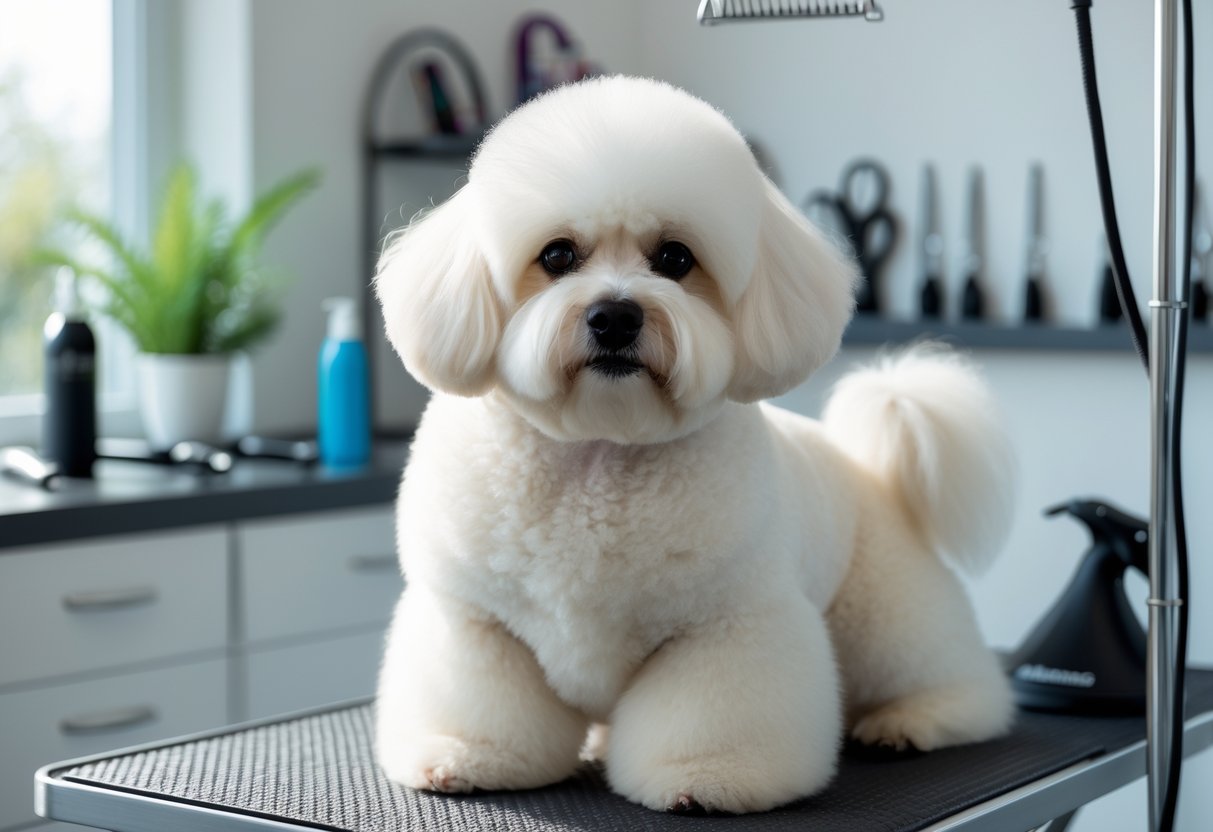
The Bichon Frise has a unique curly, hypoallergenic coat that needs regular care to stay healthy and tangle-free. Besides brushing, they require professional grooming and routine checkups like nail, ear, and dental care to maintain their overall well-being.
Brushing and Coat Care
The Bichon Frise’s coat is soft, curly, and prone to matting, so daily brushing is essential. Owners should use a slicker brush and a wide-tooth comb to remove tangles and prevent mats. Applying a detangling spray can help make brushing easier and less uncomfortable for the dog.
Bathing should happen every 3 to 4 weeks. It keeps the coat clean but should be done with gentle, dog-specific shampoo to avoid skin irritation. After bathing, thoroughly dry the coat using a towel and a blow dryer on a low setting to prevent dampness, which can lead to skin issues.
Regular brushing keeps the coat fluffy and also stimulates the skin, promoting healthy hair growth. Skipping brushing can lead to painful mats that may require professional trimming or shaving.
Professional Grooming Needs
Bichon Frises benefit from professional grooming every 4 to 6 weeks. Groomers trim and style their coats to maintain the breed’s signature puffball appearance. Professional grooming also includes thorough cleaning of areas that are hard to reach at home, like around the eyes and paws.
A groomer will also check the dog’s skin for irritations or infections. Most owners schedule monthly grooming appointments to keep their Bichon’s coat healthy and looking its best.
While professional grooming focuses on styling and in-depth cleaning, weekly at-home maintenance like brushing and minor trims is necessary to extend the time between visits.
Nail, Ear, and Dental Care
Nail trimming should be done every 3 to 4 weeks. Long nails can cause discomfort and lead to walking problems. Owners should use dog-specific nail clippers and avoid cutting too close to the quick, which causes bleeding.
Ear care is important to prevent infections. The Bichon’s ears should be checked weekly for dirt, wax buildup, or foul smell. Cleaning with a vet-approved ear cleaner keeps ears healthy and free from common ear problems.
Dental care includes brushing the dog’s teeth 2 to 3 times a week to prevent plaque buildup and gum disease. Regular dental checks by a vet help avoid more serious health problems linked to poor oral hygiene.
Health and Lifespan
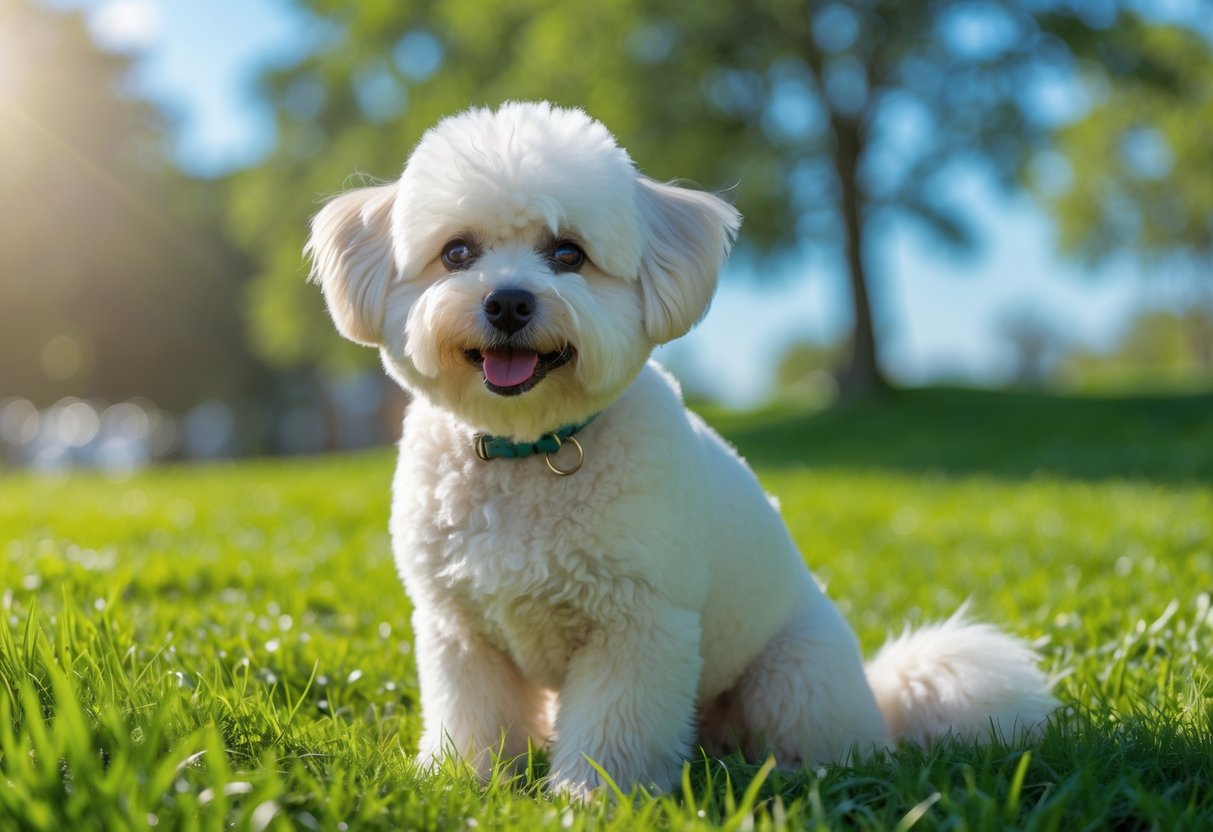
The Bichon Frise is a small breed with specific health concerns that owners should watch for. Proper care, regular vet visits, and attention to diet all help the dog stay healthy and live a full life.
Common Breed Health Issues
The Bichon Frisé can face several health problems during its life. Diabetes mellitus is one common issue, causing problems with blood sugar regulation. Symptoms include increased thirst and urination, weight loss, and appetite changes. It requires daily insulin and diet control.
Eye conditions like corneal dystrophy and cataracts also affect the breed. Corneal dystrophy causes cloudy spots on the eye but usually does not cause pain. Cataracts can affect vision and might need surgery. Owners should watch for squinting, rubbing of eyes, or changes in vision.
Bladder stones and dental disease are other concerns. Bladder stones cause pain and difficulty urinating and may require surgery or a special diet. Dental disease is common in small dogs like the Bichon Frise, so regular teeth cleaning is important to avoid pain and tooth loss.
Life Expectancy
Bichon Frises typically live between 12 and 15 years. Some can live longer, even up to 20 years, depending on genetics, care, and overall health.
A well-balanced diet, proper exercise, and mental stimulation contribute to longevity. Weight management is important because obesity can worsen health problems and shorten life.
With early detection and treatment of health issues, the breed’s lifespan can often be extended, allowing the dog to enjoy more active years.
Preventive Veterinary Care
Regular veterinary checkups are key to keeping a Bichon Frisé healthy. Annual exams can catch eye problems, diabetes, dental issues, and bladder stones early.
Vaccinations, parasite control, and dental cleanings are essential parts of preventive care. Owners should discuss diet and feeding plans with their vet to maintain proper weight.
Prompt attention to changes in behavior, appetite, or physical signs like excessive thirst or eye irritation can help prevent serious problems. Early action often improves treatment success in this breed.
Ideal Home and Lifestyle
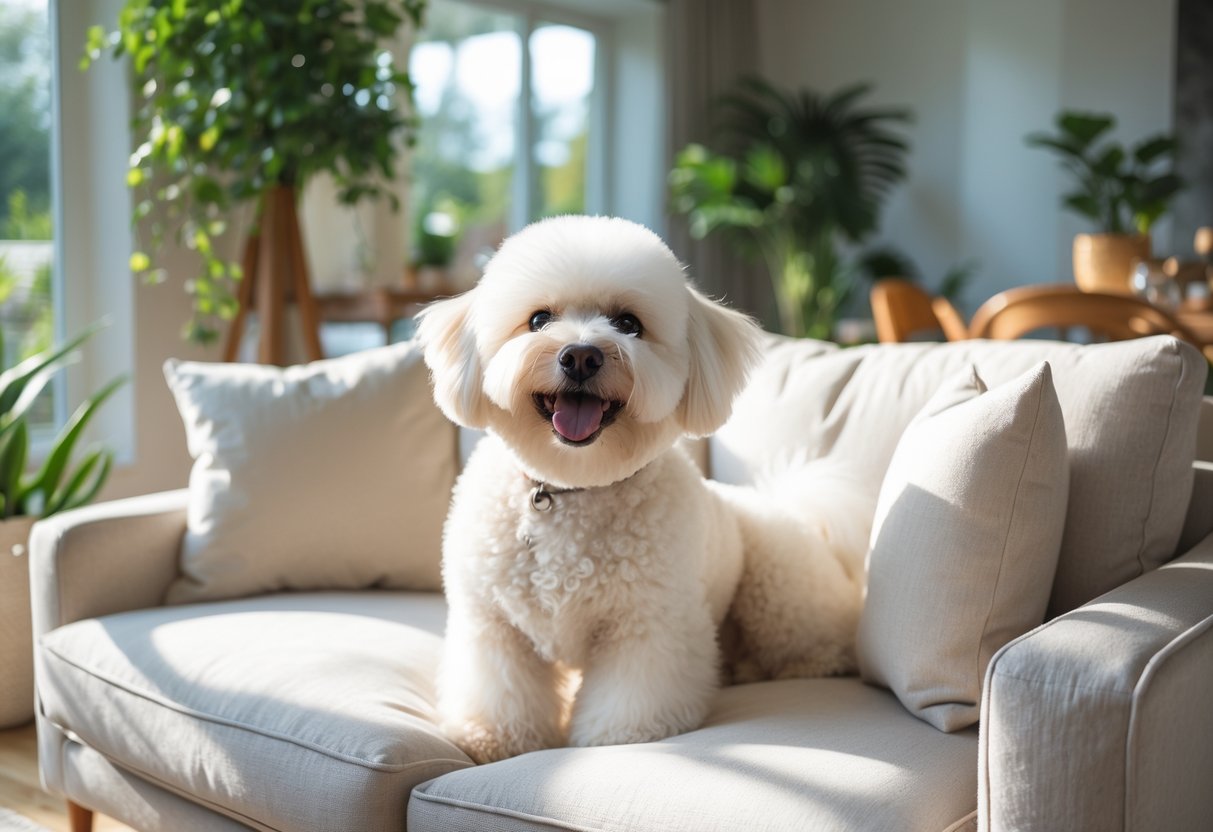
The Bichon Frise needs regular exercise, an apartment-friendly living space, and an owner committed to its care. It thrives with daily walks, social time, and routine grooming. This breed suits homes where it receives attention and moderate activity without much space.
Exercise and Activity Needs
Bichon Frises require about 30 to 45 minutes of exercise each day. This includes morning and evening walks plus play sessions indoors or in a secure yard.
Short walks help maintain joint health and prevent weight gain. Mental stimulation through training or puzzle toys reduces boredom and destructive behaviors.
Exercise should be adjusted for weather. In hot weather, activities should happen early or late to avoid heat stress. Cold weather may require a dog coat and shorter outdoor time to protect sensitive paws.
Best Living Environments
This breed adapts very well to apartment or small home living. A minimum of 300-500 square feet with clear pathways works well for a single Bichon.
Safety measures are important, such as securing electrical cords and baby gates at stairs. Raised beds and food bowls support joint comfort.
Access to outdoor spaces, like balconies or fenced yards, is ideal for safe play and fresh air. The environment should maintain a moderate temperature (68-72°F) with humidity around 40-50% to keep the coat healthy.
Suitability for Different Owners
Bichon Frises suit families, seniors, and apartment dwellers who have time for care and companionship. They bond closely with their owners and do not tolerate long periods alone.
They are good with gentle children and other pets due to their social nature. However, owners must be prepared for regular grooming and training to manage their sometimes stubborn personality.
First-time dog owners can handle this breed if willing to invest in grooming and consistent exercise routines. Their moderate size and friendly temperament make them manageable and rewarding companions.
Frequently Asked Questions
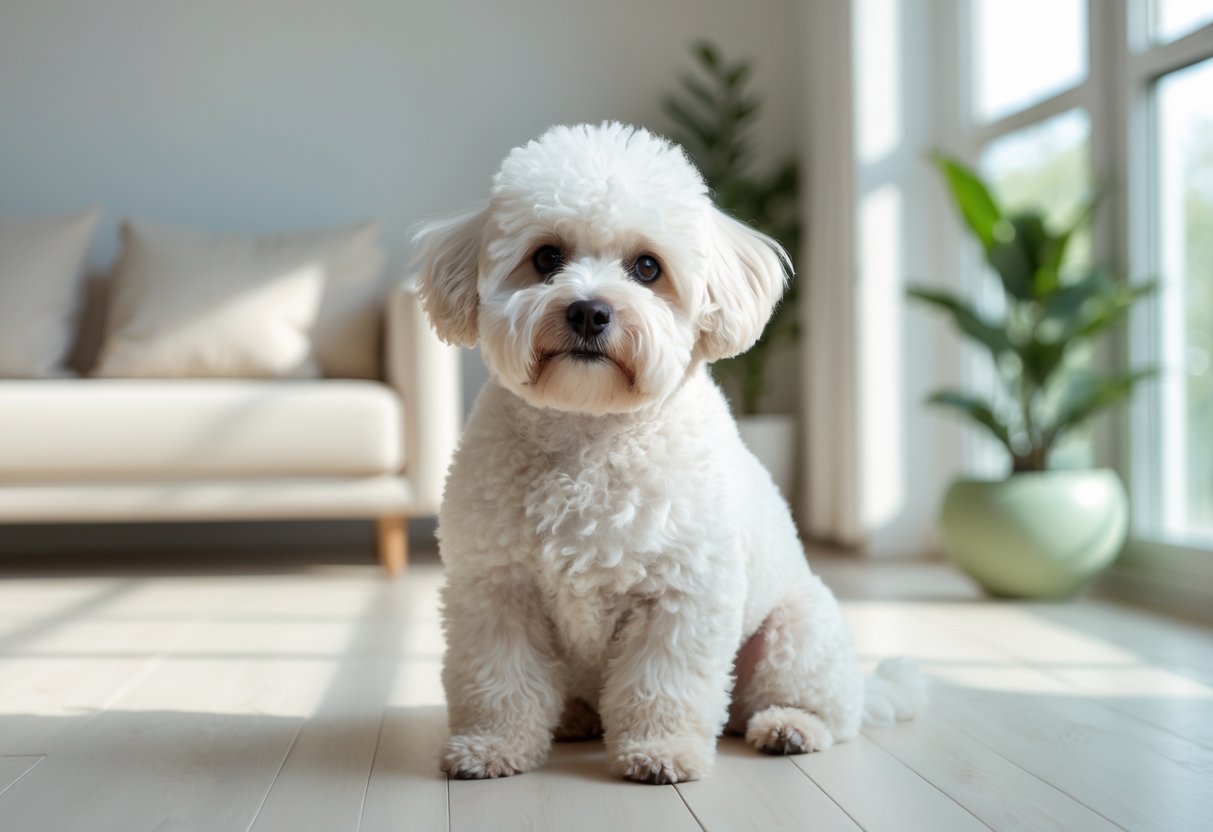
The Bichon Frise is known for its friendly nature and fluffy coat. It requires regular upkeep and has specific health and activity needs. It generally adapts well to family life and other pets.
What is the typical temperament of a Bichon Frise?
Bichon Frises are cheerful and affectionate dogs. They enjoy being around people and often have a playful and gentle nature. They can be good companions and respond well to training with patience.
How often should a Bichon Frise be groomed?
Bichons need grooming every 4 to 6 weeks to keep their coat healthy. Regular brushing at home every few days helps prevent mats and keeps the fur clean. Frequent washing can harm their skin, so baths should be done carefully.
Are there any common health issues associated with Bichon Frises?
They may have skin problems like allergies and hot spots as they age. Dental issues and patellar luxation (knee problems) are also seen. Regular vet checkups help manage these concerns early.
How much exercise does a Bichon Frise need?
Bichons need moderate daily exercise such as walks and playtime. About 30 minutes to an hour of activity a day keeps them healthy and happy. They adapt well to indoor play if outdoor time is limited.
What is the average lifespan of a Bichon Frise?
Their average lifespan ranges from 12 to 15 years. Proper care, good nutrition, and regular health checks contribute to a longer life.
How is the Bichon Frise with children and other pets?
Bichons usually get along well with children of all ages. They do well with other dogs and pets, making them suitable for multi-pet families. Supervision is advised with very young children to ensure safe interactions.
